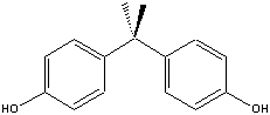March 29, 2010
Raising Up The BPA Boogeyman Yet Again: A Scientific Disgrace

By Michael D. Shaw
In the classical scientific method, observations are made and a hypothesis is proposed, that is then tested by a carefully designed experiment. The data obtained from the experiment are analyzed, and conclusions are drawn. Sadly, it is necessary to re-establish the basics in our present climate of agenda and politically driven “science.”
Years ago, when most science was actually done in the classical manner, it was observed—for example—that industrial workers exposed to certain chemicals seemed to develop diseases at a rate higher than would be expected compared to the unexposed population. Specific cohorts were created, and epidemiological analysis was performed. In many cases, it was demonstrated that these chemicals were indeed related to the diseases. Further verification often took the form of tests on laboratory animals.
Now, however, the process has been reversed. Researchers will start off with a conclusion, and then design an experiment to prove it, often relying on vague and questionable statistical modeling. Note the difference here: A hypothesis is to be tested, with the experimental results leading to scientific truth. In real science, the refutation of a hypothesis would be as welcome as the proof of it.
Complicating matters, of course, is money. Doing science is expensive, so the vast majority of it is funded by grants. Granting agencies, being composed of humans, are subject to peer pressure, prejudices, and the fashions of the day. Thus, a significant number of academic scientists—especially those who have made their reputations on “exposing” the toxic chemicals foisted on us by evil industry—have established codependent relationships with their granting agencies.
The funding given to granting agencies is controlled by legislative bodies, where knowledge of science is a rare commodity. The time-tested method whereby agencies get their money is by promulgating dire stories of how some substance will harm people—usually children. Since no legislator wants to be seen as being against the environment or against children, the budgets of the agencies tend to expand.
At the same time, any number of fear entrepreneurial green pressure groups capitalize on public gullibility and spend lavishly on direct mail appeals hyping the latest threat, and how their group and their group alone can protect you. To keep the cycle going, these organizations have to establish a track record, not so much of real accomplishment, but rather of “action.”
Which brings us to the present sorry state of BPA regulation in California, and Proposition 65.
Bisphenol A (BPA) is an important industrial chemical primarily used in the manufacture of polycarbonate—a widely used plastic; and as a key constituent of epoxy resins—employed as protective coatings on metal food and beverage cans. To say that this compound has been tested extensively is a comic understatement. More than 5,400 journal articles have already been published on BPA safety.
BPA has been used in consumer products and researched and studied for over 40 years. The weight of scientific evidence clearly supports the safety of BPA and provides strong reassurance that there is no basis for human health concerns from exposure to BPA. It is noted that no substitute for BPA in the vital can lining application has ever been found.
Proposition 65 requires California to publish a list of chemicals known to cause cancer or birth defects or other reproductive harm. This list, which must be updated at least once a year, has grown to include approximately 800 chemicals since it was first published in 1987. Few sentient beings would accuse the Golden State of being a pushover for the chemical industry.
Thus, it was considered a victory for science and common sense when on July 15, 2009, the Proposition 65 Developmental and Reproductive Toxicant Identification Committee voted not to list BPA as a reproductive toxicant.
Inasmuch as the State had summarily deprived the ill-named Natural Resources Defense Council (NRDC) of one of its favorite whipping boys and fund-raising icons, this victory was to be short-lived. On July 19, 2009, NRDC delivered a 327-page polemic to California’s Office of Environmental Health Hazard Assessment, which somehow convinced it to reopen discussions on the chemical. I say “somehow” since NRDC’s petition offered nothing new on the subject, consisting instead of a rather embarrassingly prepared compilation of documents that the State had already seen.
NRDC—and the State—are no doubt aware of the devastating article published online in October, 2009 in Toxicological Sciences that put yet another stake through the heart of supposed BPA-caused reproductive anomalies. There are many more.
Listen to eminent British toxicologist Richard M. Sharpe, as quoted from his editorial piece in the March, 2010 issue of the same journal:
Fundamental, repetitive work on bisphenol A has sucked in tens, probably hundreds, of millions of dollars from government bodies and industry which, at a time when research money is thin on the ground, looks increasingly like an investment with a nil return. All it has done is to show that there is a huge price to pay when initial studies are adhered to as being correct when the second phase of scientific peer review, namely, the inability of other laboratories to repeat the initial studies, says otherwise.
As scientists, we all like our ideas and hypotheses to be proved correct; yet, there is equal merit in being proved wrong. The ideal hypothesis is one that can be shot at, and in most cases, it ends up full of holes (at best). This is the tried and trusted way via which scientific understanding moves onward, and ultimately, our own convictions and presumptions cannot stand in its way.
By succumbing to NRDC and continuing the pointless debate, let alone banning the chemical, the economically stricken State of California risks pulling a reverse Rumpelstiltskin: Spinning gold into straw.

